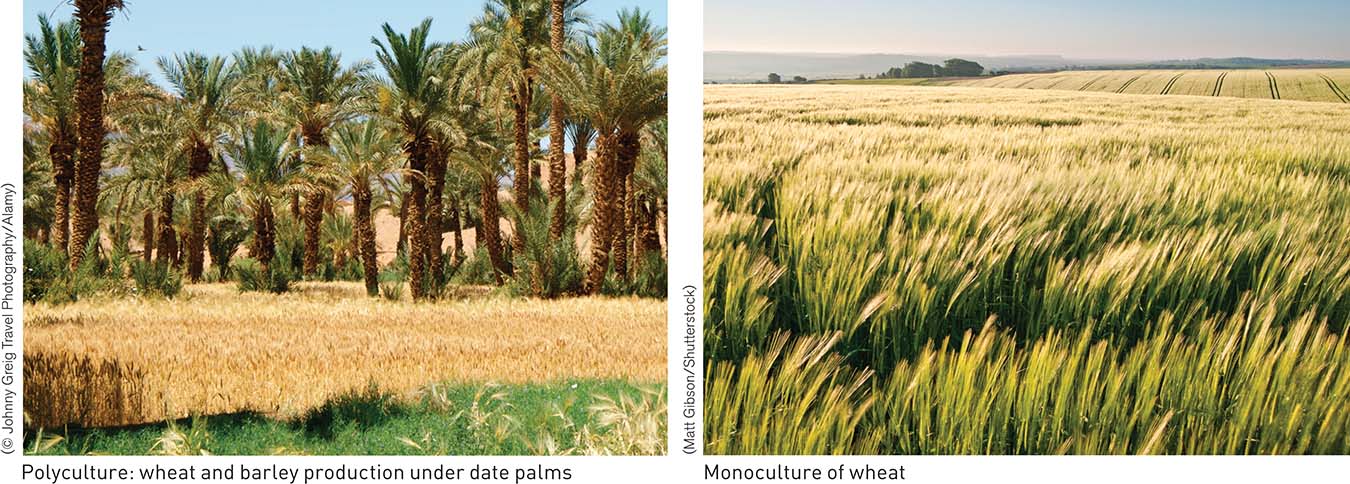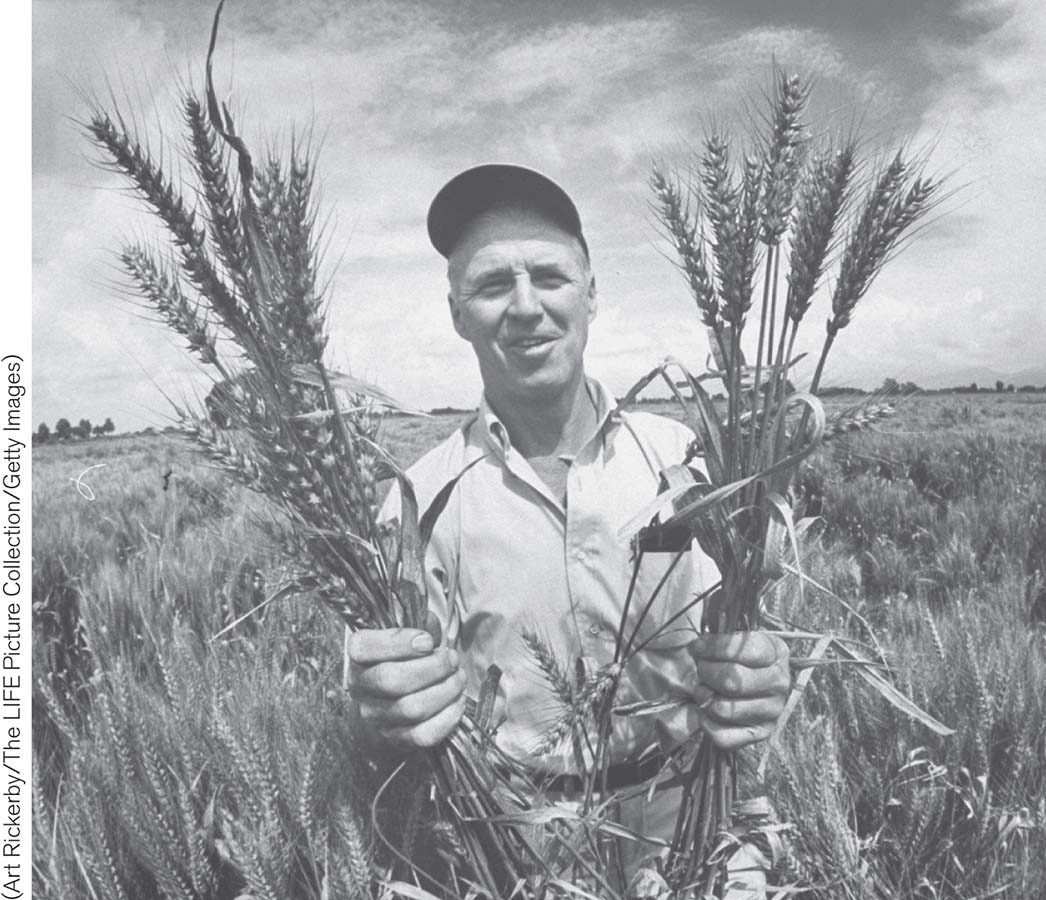7.4 Industrial agriculture, which increases production, comes with environmental impacts
7.4–
198
In the early days of our species, humans lived off the products of natural ecosystems, foraging for nuts, berries, and other wild plant materials, and hunting wild animals, such as mammoths and musk ox. At the end of the last ice age, some 10,000 years ago, a radical shift occurred as human communities began to domesticate food plants: corn and squash in the Americas, wheat and barley in the Middle East, and rice in China. We also began breeding livestock for a variety of purposes, including meat, milk, leather, and wool. As beneficial as such technologies have been to human societies, they have inevitably had an impact on the environment, particularly with the rise of industrial agriculture developed to meet our rapidly growing urban populations.
polyculture The growing of multiple domesticated crops that may be intermixed with useful wild species.
crop rotation A method farmers use to maintain soil fertility and reduce the buildup of pests by rotating crops on two-
monoculture A planting of a single variety of crop, generally over a large area, that creates an attractive target for pests and pathogens of the crop.
At first, humans performed the work of cultivating and harvesting crops with the help of simple tools and animal power. Haphazard gardens near settlements might have included a polyculture of multiple domesticated crops intermixed with useful wild species. With little or no knowledge of soil chemistry, early farmers learned to maintain soil fertility by rotating crops on two-

The gains in production made with industrial agriculture spread to the developing world with the Green Revolution, which was spearheaded by a dedicated plant breeder named Norman Borlaug (Figure 7.11). Working with wheat in Mexico, Borlaug made several thousand crosses between genetic varieties, producing high-

199

Although the Green Revolution emphasized the planting of single varieties of wheat and other grains, why did it depend ultimately on biodiversity to make its gains in production possible?
The revolution that Borlaug began in Mexico spread, first to other Latin American countries and, by the 1960s, to India and Pakistan, which were facing famine. In 1970 Borlaug received the Nobel Peace Prize in recognition of his life-
Think About It
In the mid-
1960s, some scientists were predicting widespread deaths due to famine by the 1970s. Luckily, this did not occur. How did the Green Revolution alter the predicted course of history? Because predictions of famine made half a century ago did not materialize, is there no cause for concern about future famines?